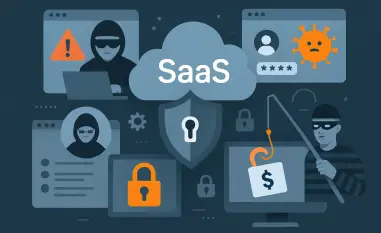Introduction to a Growing Cyber Threat
Imagine a routine workday where an employee, under pressure to join a critical meeting, searches for a Microsoft Teams installer only to unknowingly download a malicious version laced with devastating malware, a scenario that is no longer a distant possibility but a stark reality in 2025. As cybercriminals increasingly exploit trusted productivity tools to infiltrate corporate networks, malvertising campaigns, blending deceptive advertising with malware distribution, have surged, posing a significant challenge to enterprise security and highlighting the urgent need for heightened vigilance.
The cybersecurity landscape today is marked by sophisticated threats that prey on familiarity and trust. Platforms like Microsoft Teams, integral to modern business operations, have become prime targets for attackers seeking to breach organizational defenses. This report delves into a specific malvertising campaign delivering the Oyster backdoor through fake Teams installers, exploring its mechanics, historical context, and implications for industry security.
Understanding the Threat of Malvertising in Cybersecurity
Malvertising has emerged as a pervasive menace, with campaigns growing in both frequency and complexity over recent years. These attacks often disguise malicious content within seemingly legitimate online advertisements or search results, tricking users into downloading harmful software. The impact on businesses is profound, as a single breach can lead to data loss, financial damage, and reputational harm, underscoring the critical nature of this threat.
Targeting widely used tools like Microsoft Teams amplifies the risk, especially in corporate environments where such platforms are deeply embedded in daily workflows. Attackers exploit the trust employees place in familiar software, turning routine updates or installations into gateways for malware. The consequences ripple across organizations, disrupting operations and exposing sensitive information to unauthorized access.
Key players in this arena include cybercriminals who orchestrate these schemes, security firms working to detect and mitigate threats, and tech giants like Microsoft striving to fortify their platforms. The evolving nature of these attacks, driven by innovative tactics and technological advancements, demands constant adaptation from all stakeholders. As threats become more refined, the industry faces an ongoing battle to safeguard digital ecosystems.
Mechanics of the Oyster Backdoor Campaign
Tactics Behind Fake Microsoft Teams Installers
Cybercriminals behind the Oyster backdoor campaign employ cunning strategies to deceive users, primarily through search engine optimization (SEO) poisoning. By manipulating search results, they ensure fake download sites mimicking official Microsoft pages rank highly, luring unsuspecting individuals seeking Teams installers. This tactic capitalizes on the urgency or inattention of users, often corporate staff under time constraints.
Further enhancing the deception, attackers leverage social engineering to build trust, crafting sites and prompts that appear authentic. They also abuse code-signing certificates and exploit Azure Trusted Signing Services to make malicious installers seem legitimate. Such measures bypass initial security checks, increasing the likelihood of successful infiltration into targeted systems.
Technical Details of Oyster Backdoor Deployment
Once installed, the Oyster backdoor reveals its destructive potential through a modular design that supports remote access, data theft, and persistent system control. This flexibility allows attackers to tailor their approach, extracting valuable information or deploying additional payloads as needed. The malware’s ability to adapt rapidly poses a significant hurdle for traditional antivirus solutions.
Evasion techniques compound the challenge of detection, with unique file hashes generated for each download. This variability ensures that signature-based detection methods struggle to identify the threat consistently. As a result, organizations face difficulties in mitigating the risk, necessitating advanced tools and strategies to counter such elusive malware.
Historical Context of Microsoft Teams Exploitation
Exploitation of Microsoft Teams as a vector for cyber threats is not a new phenomenon but part of a troubling trend. Notable incidents, such as the Matanbuchus ransomware attacks leveraging fake Teams calls this year, illustrate how attackers exploit platform features. Similarly, Quick Assist functionalities have been misused to gain unauthorized access, highlighting persistent vulnerabilities.
Recurring patterns emerge in campaigns like Vanilla Tempest, active since earlier in 2025, which use chat-based lures to deliver remote access trojans and PowerShell-based malware. These methods rely on mimicking legitimate communications, exploiting user trust in familiar interfaces. Such tactics reveal a calculated approach to bypassing both technical and human defenses.
The familiarity of trusted platforms often breeds complacency among users, significantly amplifying breach risks. Employees accustomed to routine interactions on Teams may overlook subtle red flags in phishing attempts or unsolicited messages. This behavioral gap underscores the need for ongoing awareness initiatives to counter exploitation of widely adopted tools.
Challenges in Combating Malvertising Threats
Detecting sophisticated malvertising remains a formidable challenge due to the use of legitimate-looking websites and intricate redirect chains. These tactics obscure malicious intent, making it difficult for even advanced security systems to flag threats before they reach end users. The seamless integration of deception into online spaces complicates timely intervention.
The convergence of technical skill and psychological manipulation further tests enterprise security measures. Attackers combine advanced coding with an understanding of human behavior to craft convincing lures, often targeting employees during high-pressure moments. This dual approach demands a rethinking of traditional defense mechanisms to address both dimensions effectively.
Potential strategies to overcome these obstacles include leveraging real-time threat intelligence to identify emerging risks swiftly. Adaptive defenses that evolve in response to new attack patterns also hold promise. By prioritizing dynamic solutions over static protocols, organizations can better position themselves against the fluid nature of malvertising threats.
Security Measures and Industry Response
Microsoft has taken proactive steps to enhance Teams security, implementing features like automatic alerts for malicious links as part of broader integrations with Defender for Office 365. These measures aim to provide immediate warnings to users, reducing the likelihood of successful attacks. Continuous updates to security protocols reflect an ongoing commitment to user safety.
Industry experts recommend additional safeguards, such as disabling unnecessary external access within Teams to limit exposure. Educating users on verifying download sources and maintaining vigilance against unsolicited communications is equally critical. These practices empower employees to act as a first line of defense against deceptive tactics.
Compliance with evolving security standards plays a vital role in fortifying defenses, necessitating collaboration among security firms and IT leaders. Sharing intelligence and best practices enables a collective response to emerging threats. Such partnerships are essential for developing comprehensive strategies that address the multifaceted nature of modern cyber risks.
Future Outlook for Enterprise Cybersecurity
As productivity tools become even more integral to business operations, trends in malvertising and platform exploitation are likely to intensify. Attackers will continue refining their methods, potentially targeting integrations between platforms to exploit interconnected systems. Anticipating these shifts is crucial for staying ahead of evolving threats.
Emerging defensive technologies, such as AI-driven anomaly detection, offer hope for more robust protections. These innovations, alongside potential disruptors in cybercriminal tactics, will shape the security landscape over the coming years, from 2025 to 2027. User awareness remains a cornerstone, as informed employees can significantly reduce vulnerability.
The impact of regulatory changes and global economic conditions will also influence cybersecurity strategies. Stricter compliance requirements may drive investment in security infrastructure, while economic fluctuations could affect resource allocation. Balancing innovation with practical implementation will be key to maintaining resilient defenses in an unpredictable environment.
Conclusion and Recommendations
Reflecting on the detailed examination of the Oyster backdoor campaign, it became evident that its sophistication posed a significant threat to enterprise security in 2025. The intricate use of fake Microsoft Teams installers underscored the vulnerability of trusted platforms, while the historical patterns of exploitation revealed a persistent challenge that demanded urgent attention.
Looking ahead, actionable steps emerged as critical for mitigating such risks. Organizations need to prioritize proactive defenses, integrating real-time threat intelligence to detect and respond to malvertising swiftly. Strengthening user education also proves essential, equipping staff with the skills to identify suspicious interactions and verify sources before engaging.
Ultimately, fostering collaboration across the industry stands out as a vital consideration. By uniting security firms, platform providers, and IT leaders, a shared framework for tackling evolving threats takes shape. This collective effort, combined with a focus on balancing productivity with security, offers a pathway to prevent trusted tools from becoming liabilities in the digital age.













